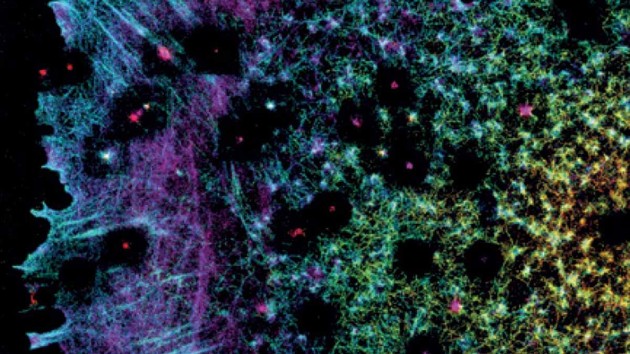Collection |
Collections
Filters
-
Collection Type
-
-
Collection |
 Women’s health
Women’s health
Research into women’s health has suffered from historical neglect and lack of funding.
Image: Lara Crow/Springer Nature Limited -
Collection |
 Nobel Prize in Chemistry 2020
Nobel Prize in Chemistry 2020
The 2020 Nobel Prize in Chemistry has been awarded to Emmanuelle Charpentier and Jennifer Doudna for their pioneering work in gene-editing.
Image: Springer Nature/The Nobel Foundation/Imagesource -
Collection |
 20th Anniversary
20th Anniversary
The October 2020 issue of Nature Reviews Neuroscience marks 20 years since the journal was launched.
-
Collection |
 The Kavli Prize 2020
The Kavli Prize 2020
The Kavli Prize is awarded by a partnership between the Norwegian Academy of Sciences, the Norwegian Ministry of Education and Research and the Kavli Foundation.
-
Collection |
 Networks
Networks
Network science is now a mature research field, whose growth was catalysed by the introduction of the ‘small world’ network model in 1998.
Image: Kiyoshi Takahase Segundo / Alamy Stock Photo -
Collection |
 The 3D genome
The 3D genome
This collection includes recent articles from across the Nature group of journals and showcases both the latest advances in the methodologies used to study genome organization, and our recent understanding of how genome organization and nuclear architecture regulate gene expression, cell fate and cell function in physiology and disease.
Image: V. Summersby -
Series |
 Alzheimer disease
Alzheimer disease
Alzheimer disease (AD) is a devastating neurodegenerative disorder that eventually results in dementia. Currently, there are no disease-modifying therapies for AD and the few available symptomatic treatments are of limited benefit. Thus, there is a pressing need to better understand this disease in order to develop effective treatments and to detect the disease in individuals before they exhibit extensive brain atrophy. This article series examines our current understanding of the pathophysiology of AD and some of the approaches being used to study this disease.
Image: Jennie Vallis -
Collection |
 The Kavli Prize 2018
The Kavli Prize 2018
The Kavli Prize is awarded by a partnership between the Norwegian Academy of Sciences, the Norwegian Ministry of Education and Research and the Kavli Foundation recognizing seminal work of scientists in astrophysics, nanoscience and neuroscience
-
Collection |
 Super-resolution microscopy
Super-resolution microscopy
Popularization of super-resolution imaging techniques has allowed cell biologists to probe cell structure and function in previously unattainable detail. These methodologies continue to evolve, with new improvements that allow tailoring the available techniques to a particular need and application. This collection showcases primary research articles, reviews and protocols and highlights these recent developments by exemplifying the new, interesting applications of super-resolution microscopy as well as related tool development.
Image: Bertocchi et al., Nature Cell Biology volume 19, pages 28–37 (2017). -
-
Series |
 Food intake, metabolism and the brain
Food intake, metabolism and the brain
Obesity and metabolic disorders are becoming increasingly prevalent in many parts of the world, and have been accompanied by rising morbidity and associated health costs. This crisis has driven increased research efforts aimed at understanding the neurophysiological systems that regulate food intake and metabolism — and how these systems can become dysfunctional. Nature Reviews Neuroscience presents a series of articles examining various aspects of this regulation in health and disease, including the potential implications for the development of therapies.
Image: Jennie Vallis

 Nobel Prize in Physiology or Medicine 2021
Nobel Prize in Physiology or Medicine 2021
 Adolescence
Adolescence